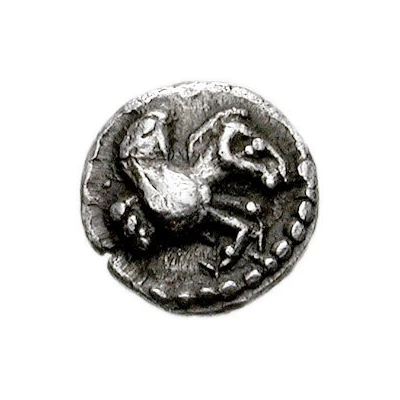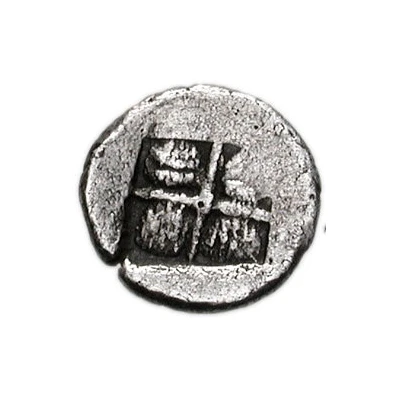


© Classical Numismatic Group, Inc.
Hemiobol 500 BC
500 BC year| Silver | 0.40 g | 8.0 mm |
| Issuer | Argilos (Macedon) |
|---|---|
| Type | Standard circulation coin |
| Year | 500 BC |
| Value | Hemiobol (1⁄12) |
| Currency | Drachm |
| Composition | Silver |
| Weight | 0.40 g |
| Diameter | 8.0 mm |
| Shape | Round (irregular) |
| Technique | Hammered, Incuse |
| Demonetized | Yes |
| Updated | 2024-10-10 |
| Numista | N#170295 |
|---|---|
| Rarity index | 97% |
Reverse
Quadripartite incuse square
Comment
Liampi, Argilos, p. 15; HPM pl. 14, 18 (Crestones); SNG ANS 763 (Therma).
Interesting fact
The Hemiobol coin from Argilos (Macedon) made of Silver weighing 0.40 g is interesting because it was used as a form of currency in ancient Greece, specifically in the region of Macedon, and it's a great example of the artistry and craftsmanship of ancient coinage. The coin features an image of a mythical creature, possibly a griffin or a lion, and its design would have been a symbol of the issuing authority and the cultural values of the time. Additionally, the fact that it was made of silver, a valuable and durable metal, would have added to its value and longevity as a means of exchange.